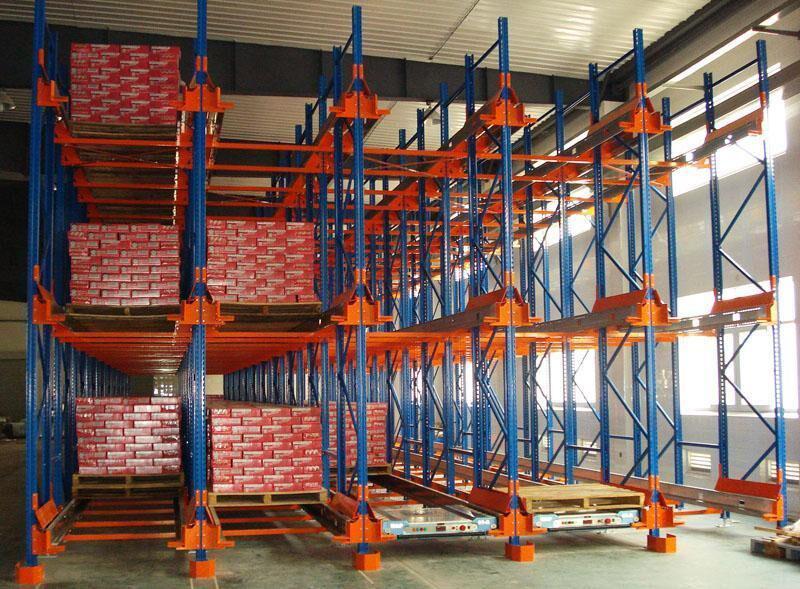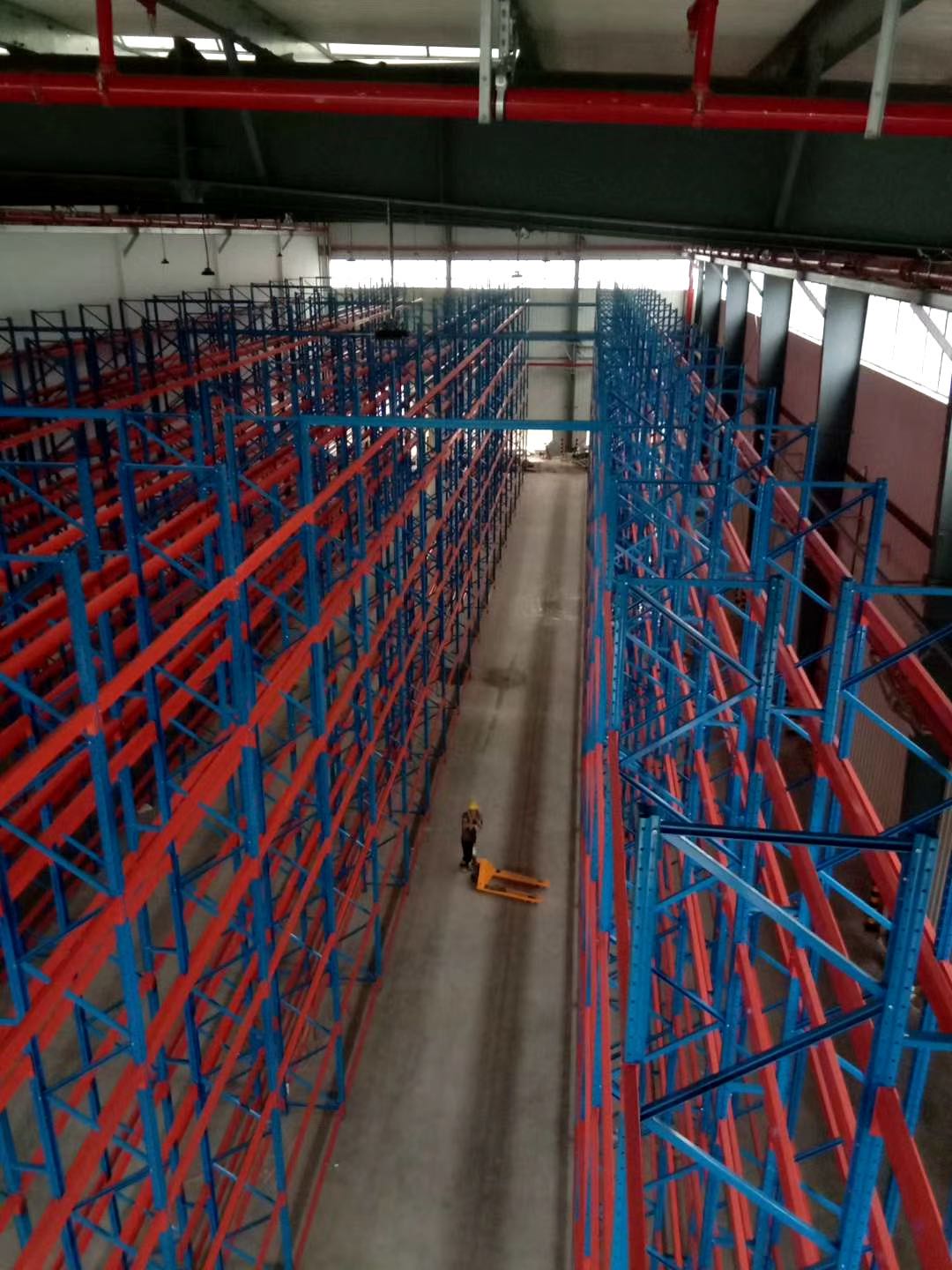Cantilever racking systems are the backbone of efficient storage for long, bulky, or awkwardly shaped items like lumber, piping, steel, and furniture. Their unique design, featuring vertical columns supporting horizontal arms without front obstructions, offers unparalleled accessibility. However, like any critical warehouse infrastructure, cantilever racks are subject to wear, tear, and accidental damage. Cantilever racking repairs are not just a maintenance task; they are a crucial investment in operational safety, productivity, and asset protection. Neglecting necessary repairs can lead to catastrophic failures, costly inventory loss, severe injuries, and regulatory violations. This comprehensive guide explores the essential aspects of effective cantilever racking repairs.

Understanding the Importance of Timely Cantilever Racking Repairs
Ignoring damage on a cantilever rack is akin to playing Russian roulette with warehouse safety. The consequences can be dire:
Catastrophic Collapse: Damaged components significantly weaken the structure. Overloaded or impacted racks can buckle or collapse entirely, endangering lives and destroying stored goods.
Product Damage: Even minor misalignment or instability can cause stored items to shift or fall, resulting in significant financial loss.
Operational Downtime: A major failure or mandated shutdown by safety inspectors halts operations, causing costly delays and backlogs.
Increased Liability: Failure to maintain racks in safe condition exposes the business to substantial legal liability in the event of an accident.
Regulatory Fines: Organizations like OSHA (Occupational Safety and Health Administration) enforce strict standards for rack safety. Non-compliance due to unrepaired damage leads to hefty fines.
Proactive inspection and timely cantilever racking repairs mitigate these risks, ensuring a safe working environment and protecting your bottom line.
Aspect 1: Thorough Inspection & Damage Assessment (The Foundation of Repair)
Before any repair can be planned or executed, a meticulous inspection is paramount. This isn't a casual glance; it requires a systematic approach:
Frequency: Regular inspections should be scheduled (e.g., weekly, monthly, quarterly) by trained internal personnel, supplemented by annual or bi-annual professional inspections.
Trained Personnel: Inspectors must understand cantilever rack design, load capacities, common failure points, and safety protocols. Certification programs like those from RMI (Rack Manufacturers Institute) are valuable.
Comprehensive Checklist: Inspections should cover:
Uprights/Columns: Checking for dents, bends, twists, cracks (especially at base plates and connections), corrosion, and plumb.
Arms: Inspecting for bends, twists, cracks (particularly at the connection point to the column), deformation of load-bearing surfaces, and secure fastening.
Base Plates: Ensuring they are flush with the floor, undamaged, and anchor bolts are tight, undamaged, and correctly installed in suitable concrete.
Bracing: Verifying all braces are present, undamaged, straight, and securely fastened at all connection points.
Connections: Checking bolts, rivets, or welds for tightness, shearing, cracking, or corrosion.
Floor Anchorage: Confirming anchors are tight and the concrete around them is not cracked or spalled.
Load Conditions: Observing if loads are within rated capacity, properly positioned, and not causing deflection or stress on components.
Damage Documentation: Precise documentation is critical. Record the location (bay, level, column, arm), type and extent of damage, and take clear photographs. This informs the repair strategy and provides a historical record.
Identifying damage accurately is the cornerstone of effective cantilever racking repairs.
Aspect 2: Upright/Column Repairs (Addressing the Spine)
Uprights are the primary load-bearing elements. Damage here is serious and demands immediate attention for cantilever racking repairs:
Minor Dents & Gouges: Small, superficial dents away from critical connection points might only require monitoring. However, deeper dents, especially in the column's flanges or near base plates/arm connections, significantly compromise strength. Repairs often involve reinforcing plates welded over the damaged area by certified professionals following engineered designs.
Bends & Twists: Bent or twisted columns are extremely hazardous. They redistribute loads unevenly and dramatically reduce capacity. Repair is rarely feasible or safe. Replacement of the entire upright section (or the whole column if modular) is almost always the only safe solution. Never attempt to straighten a severely bent column.
Cracks: Any crack, especially near welds, base plates, or arm connections, is critical. Cracks propagate under load and lead to sudden failure. Cracked columns generally require immediate unloading and replacement. Welding repairs to cracks are highly specialized and must only be performed under strict engineering supervision with approved procedures and materials.
Corrosion: Surface rust might be treatable with cleaning and repainting. Severe corrosion thinning the metal requires assessment. If thickness is significantly reduced, replacement is necessary. Environmental controls might be needed to prevent recurrence.
Cantilever racking repairs involving columns are complex and high-risk, demanding engineering expertise and certified professionals.
Aspect 3: Arm Repairs & Replacements (The Load Bearers)
Arms directly support the stored load. Damage compromises their ability to carry weight safely:
Bends & Sags: Arms are designed for specific load capacities and deflection limits. Visible bending or sagging under no load, or excessive deflection under load, indicates damage. Minor bends might sometimes be carefully cold-straightened by specialists using hydraulic equipment under strict protocols. However, significant bends, twists, or deformation usually necessitate replacement.
Cracks: Cracks at the arm-to-column connection point or along the arm's length are severe. Welding repairs are possible but require a certified welder using approved procedures and materials, often involving grinding out the crack and welding with suitable filler metal under strict quality control (NDT - Non-Destructive Testing like dye penetrant or magnetic particle inspection is usually required). Replacement is frequently the safer, more efficient option.
Damaged Upright Pins or Keys: The mechanism securing the arm to the column (pins, keys, bolts) must be intact. Bent, sheared, or missing pins/keys render the arm insecure. Repair involves replacing the damaged fastening components with OEM or engineer-approved equivalents.
Deformed Load Surfaces: The top surface of the arm must be flat to distribute load evenly. Significant deformation can concentrate loads and damage stored goods. Repair usually means replacement.
Cantilever racking repairs to arms require careful assessment to determine if repair is viable or if replacement is the only safe course of action.

Aspect 4: Base Plate & Anchor Repairs (Ensuring Stability)
The base plate anchors the entire upright to the floor. Failure here destabilizes the whole column:
Bent or Damaged Base Plates: Impact from equipment can bend base plates. Severely bent plates compromise the column's plumb and load transfer. Repair typically involves replacing the base plate assembly. Straightening is rarely effective or safe.
Loose, Damaged, or Missing Anchors: Anchors must be tight. Loose anchors allow movement. Sheared or broken anchors provide no restraint. Corroded anchors weaken over time. Repair involves:
Tightening loose anchors to the specified torque.
Replacing damaged, missing, or corroded anchors. This often requires drilling out the old anchor and installing a new, approved anchor of the correct type and strength rating into sound concrete.
Concrete Floor Damage: Anchors are only as strong as the concrete they're embedded in. Cracked, spalled, or deteriorated concrete around an anchor point fails to hold the anchor properly. Repair involves concrete remediation – breaking out damaged concrete, cleaning, and pouring new high-strength grout or epoxy, followed by re-installing the anchor. This is critical cantilever racking repair work requiring concrete expertise.
Shims: Properly installed, welded steel shims are acceptable to level base plates on uneven floors. Improper shimming (e.g., using random washers, wood, or too many shims) is unsafe and requires correction during repairs.
Cantilever racking repairs at the base are fundamental to preventing rack collapse.
Aspect 5: Bracing & Connection Repairs (Maintaining Rigidity)
Bracing (horizontal and diagonal tubes) provides crucial resistance against lateral forces (like seismic activity or impacts), preventing rack sway and collapse. Secure connections are vital.
Bent or Missing Braces: Bent braces lose effectiveness. Missing braces create a critical weakness. Repair involves replacing damaged or missing braces with OEM or engineer-approved components.
Loose or Damaged Connections: Bolts or rivets connecting braces to columns must be tight. Sheared fasteners or damaged connection points (lugs, weldments) must be addressed. Repair involves tightening bolts to spec, replacing sheared fasteners, or repairing/replacing damaged connection points (often requiring welding by certified personnel).
Corroded Braces/Connections: Severe corrosion weakens braces and connections. Replacement is usually required.
Ensuring all bracing is present, straight, and securely fastened is a non-negotiable part of effective cantilever racking repairs.
Aspect 6: Component Replacement vs. Welded Repairs (Making the Right Call)
A core decision in cantilever racking repairs is whether to repair a damaged component (often via welding) or replace it entirely.
Replacement:
Pros: Ensures original strength and integrity; often quicker; eliminates concerns about repair quality or heat-affected zones; usually the only option for severe damage (major bends, cracks).
Cons: Can be more expensive upfront (component cost); requires having the correct replacement part available.
Welded Repairs:
Pros: Can be cost-effective for specific localized damage (e.g., small cracks, adding reinforcement plates); avoids full disassembly sometimes.
Cons: Requires highly skilled, certified welders familiar with the rack steel and approved procedures; critical need for Non-Destructive Testing (NDT) to verify weld integrity; welding can create heat-affected zones (HAZ) potentially weakening surrounding metal if not controlled; repairs must be designed and approved by a qualified engineer; may not restore full original capacity; not suitable for all damage types (e.g., severe column bends).
General Rule: When in doubt, or for critical structural components with significant damage, replacement is the preferred and safest option. Welded repairs should only be undertaken following a detailed engineering assessment and by certified professionals adhering strictly to approved procedures, with mandatory post-repair NDT. Never accept uncertified field welding on critical rack components.
Aspect 7: Professional Repair Services & Safety Protocols
Cantilever racking repairs are not typical DIY projects. They involve significant safety risks and technical expertise:
The Need for Professionals: Engage qualified rack repair specialists or structural engineers with specific experience in industrial storage systems. They possess:
The engineering knowledge to assess damage and design safe repairs.
Certified welders and appropriate equipment.
Access to OEM or approved replacement parts.
Understanding of relevant standards (ANSI MH16.1, RMI specifications).
Proper safety protocols and insurance.
Critical Safety Protocols During Repairs:
Decommissioning: The affected bay(s), or ideally the entire run, must be completely unloaded before any repair work begins. Lockout/Tagout (LOTO) procedures apply.
Secure the Area: Erect physical barriers and clear signage to prevent unauthorized access to the repair zone.
Engineering Oversight: Repairs, especially welded ones, must follow engineered drawings and specifications.
Proper Equipment: Use appropriate lifting equipment, scaffolding, and personal protective equipment (PPE).
Quality Control: Mandatory inspection and NDT (like MPI or DPI) for all welded repairs.
Re-inspection & Reloading: After repair completion, a final inspection by a qualified person is required. Reloading should be done gradually and carefully, never exceeding the rack's rated capacity.
Attempting cantilever racking repairs without the requisite expertise and safety measures is incredibly dangerous and can lead to further damage or catastrophic failure.
Cantilever racking is a significant investment and a critical component of warehouse safety and efficiency. Proactive maintenance, including regular, thorough inspections and the prompt execution of necessary cantilever racking repairs, is not an expense but a vital safeguard. Understanding the different aspects of repairs – from damage assessment and column/arm fixes to base plate anchoring, bracing integrity, and the critical choice between replacement and welding – empowers warehouse managers to make informed decisions.
Always prioritize safety: engage qualified professionals, follow strict protocols during repairs, and never compromise on the integrity of your storage system. Investing in timely and proper cantilever racking repairs protects your employees, your inventory, your operational continuity, and ultimately, your bottom line. Don't wait for a near-miss or accident; schedule a professional rack inspection today and address any issues with certified cantilever racking repairs.







